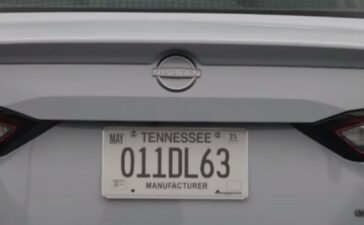Hello there, welcome back. I’m Gavin J. Knox. I’m the founder of Check Engine Light. I’ve been working on repairing vehicles for years, especially high-end vehicles like Mercedes.
So now I’m fully educated about their engineering.
Today I’m going to provide you with clear information about the Mercedes check engine light. While this issue is quite common, it’s still a misunderstood signal.
As far as I know, the illumination of the check engine light is caused by some common issues.
These common issues range from the simplest one, which is a loose gas cap, to the most complicated one, like the malfunction of oxygen sensors or a faulty catalytic converter.
You can save your time and keep your calm if you understand these issues.
You might also enjoy: Chevy 2500 Bolt Pattern: Ultimate Guide [2023]
8 Common Causes That I Found For Mercedes Check Engine Light
This table can surely save you a lot of time:
| Cause | Result | Solution | |
| Loose Gas Cap | Fuel vapor leaks, triggering the light | Tighten or replace the cap | |
| Failing catalytic converter | Reduced performance and increased emissions | Inspect and replace if necessary | |
| Fouled spark or wires |
|
Replace spark plugs and wire | |
| Faulty oxygen sensor | Incorrect fuel mixtures, affecting performance and emissions | Replace the oxygen sensor | |
| Faulty mass air flow sensor | Engine misfire, stall, or difficulty starting | Clean or replace the sensor | |
| Worn ignition coils | Engine misfires, reduced power, poor fuel economy | Replace the ignition coils | |
| Exhaust has recirculation (EGR) valve failure | Increased emissions, engine knocking, reduced performance | Clean or replace the EGR valve | |
| Crankcase ventilation valve/Oil separator issue | Engine light due to malfunction in crankcase ventilation | Replace the Crankcase Vent Valve with Oil Separator |
1. Loose Gas Cap
A loose or faulty gas cap is a simple but common cause that triggers the check engine light.
You know that the fuel system of a Mercedes is pressurized, and a gas cap can effectively maintain this pressure. A failed or loose gas cap leads to vapor leaks and will drop fuel efficiency.
This will decrease the vehicle’s integrity.
Fix: It’s not complicated! You just need to tighten the cap if it’s lost or replace it if it’s damaged. It’s not a costly repair.
2. Failing Catalytic Converter
The catalytic converter reduces exhaust emissions in a Mercedes.
A failing catalytic converter will increase emissions and decrease the car’s performance.
The symptoms of catalytic converter failure are reduced power and reduced fuel efficiency.
These signs are even more serious at higher speeds.
Fix: You should replace the catalytic to solve the problem.
This is a costly repair, but it’s necessary to maintain the vehicle’s performance.
3. Fouled Spark Plugs or Wires
Spark plugs and wires are essential components for the engine’s ignition.
They can be fouled or worn out over time.
In a Mercedes, this leads to rough idling, engine misfires, and reduced fuel efficiency.
Fix: You should replace the spark plugs and wires.
It’s a part of maintenance routines that is so simple but essential In enhancing the car’s performance.
4. Faulty Oxygen Sensor
The oxygen sensor manages the amount of air and fuel mixture. If it fails, the Mercedes will face an incorrect fuel mixture that will cause a rich run (too much fuel) or a lean ( not enough fuel).
This incorrect balance will affect the performance and emissions.
Fix: The solution involves replacing the oxygen sensor. Once you replace it, you will ensure the correct fuel mixture and proper engine performance.
5. Faulty Mass Air Flow Sensor
The mass air flow sensor measures the amount of oxygen that enters the engine.
A faulty mass air flow sensor in a Mercedes leads to engine misfires and stalls. It will also cause difficulties in starting.
Fix: You need to clean or replace the mass air flow sensor to solve this problem. It will help you make sure there are proper air measurements and proper engine performance.
6. Worn Ignition Coils
The ignition coils burn the mixture of fuel and air in the engine.
If they don’t work properly, Mercedes owners will face engine misfires, reduced performance, and poor fuel economy.
Fix: To restore engine performance and efficiency, you should solve this problem by replacing faulty or failed coils.
7. Exhaust Gas Recirculation (EGR) Valve Failure
The exhaust gas recirculation valve (EGR) reduces nitrogen and oxide emissions.
If this valve fails in a Mercedes, it will cause engine knocks, increased emissions, and decreased efficiency.
Fix: we should replace or clean the EGR valve to help the vehicle’s emissions system provide a proper function.
You might also enjoy: Everything You Need to Know About Mazda Check Engine Light
8. Crankcase Ventilation Valve/Oil Separator Issue
The failure of the crankcase, the ventilation oil valve and the oil separator issue, particularly in models like the 2017 W205 C300, can illuminate the check engine light.
This problem is caused by these components’ failure to manage the engine pressure and remove fumes.
Fix: It’s necessary to replace both the crankcase ventilation valve and the oil separator.
By doing so, you can maintain the engine’s health and also avoid more serious issues like engine misfires or oil contamination in the engine.
If you identify this issue correctly, you can ensure the proper function of your vehicle.
Understanding The Check Engine Light
In a Mercedes, the check engine light isn’t just a signal.
You should consider it an essential connection tool between you and the vehicle’s complex engineering. An illuminated check engine light in a Mercedes indicates a malfunction in the engine or emission system.
A Mercedes check engine light is only sensitive to serious emission issues and the brand’s advanced engineering.
The check light is triggered by simple issues like a loose gas cap or complex issues like serious mechanical problems.
You should know that sometimes the check light shows a minor issue and sometimes indicates a severe issue that shouldn’t be ignored.
If you ignore that, it can lead to costly repairs and will threaten your safety.
The car’s onboard diagnostic system (OBD-II) continuously monitors the car’s performance.
These systems check for signs of malfunctions or failures.
Once a fault is detected, an OBD2 scanner will save a diagnostic trouble code (DTC) in the car’s computer.
We can read this code with a diagnostic scan tool.
However, only an expert is able to interpret these codes and understand the underlying cause.
It’s worth mentioning that the matter is not just coded;
we should understand which component is failing.
For instance, a misfire code can be caused by lots of reasons. They range from spark plugs to more serious timing problems.
Mercedes owners shouldn’t just rely on the check engine light to receive signals of different problems.
They should stick to regular check-ups to prevent any potential problems.
Keep in mind that an illuminated check engine light shows the car’s needs. You should pay attention to that as soon as you can.
You might also enjoy: Jeep Check Engine Light: Causes And Solutions [2023]
Preventive Measures and Regular Maintenance
As a Mercedes owner, you have to know that maintenance doesn’t only involve fixing present problems; it also involves prevention.
The most important part of it is regular maintenance.
It means regular oil changes, filter changes, and fluid level changes. However, you should even act beyond this.
For instance, you can regularly check the exhaust system to prevent catalytic converter failure. You can care about the ignition coils and spark plugs health to prevent misfires.
You can pay attention to the oxygen sensor and mass air flow sensor to detect potential issues before they get worse.
You should also be aware of your Mercedes’s special requirements.
Possibly, different models are made with specific needs and rare vulnerabilities.
For example, one model is more prone to EGR valve issues and the other is more vulnerable to catalytic converters.
As an experienced professional in dealing with Mercedes, I strongly insist on using high-quality components and fluids.
While Mercedes engines are sensitive and accurate, using improper components will damage them.
Another preventative point is to pay attention to your vehicle’s performance and behavior.
Symptoms like unusual noises, rough idling, and even minor performance changes can indicate potential issues in the early diagnosis.
Obviously, an early diagnosis can help us in preventing worse problems.
In brief, if you want to maintain your Mercedes in healthy condition, you should consider using quality parts, stick to regular check-ups, understand the rare needs of your car and be attentive to its behaviors.
Acting like this, you can ensure your Mercedes’s best performance and also save your time and money.
You might also enjoy: Why is the check engine light flashing when accelerating?
Personal Experiences and Case Studies
During these long years of working with Mercedes, I’ve faced lots of issues.
I want to mention some cases to show you how being experienced can help you in this field.
Case Study 1: Mercedes-Benz C-Class
I client was experiencing the persistent check engine light in this car. In the first place, we detected the faulty Oxygen sensor.
But it didn’t take very long until I found that were facing a more complicated issue. The vehicle had an exhaust leak which was minor.
This leak caused the malfunction of the oxygen sensor. Once we identified the root cause and replaced the oxygen sensor, the problem was solved and the car gained its efficiency again.
Case Study 2: Mercedes-Benz E-Class
It was another surprising problem. The owner was experiencing engine misfires. We used an OBD2 scanner and the diagnostic codes indicated faulty spark plugs.
But I had another idea.
I understood that the ignition coils were worn out. So, I replaced them and as a result, I solved the problem and also enhanced the vehicle’s overall efficiency.
By mentioning these cases I wanted to tell you that it’s not enough to fully depend on diagnostic codes. You should also have an overall knowledge and understanding of your car.
If you use a mixture of your technical knowledge and experience, you can solve your car’s problems.
Conclusion
As a result, you should never ignore a check engine light on your Mercedes. You have to be familiar with its common causes and solutions to keep your car in its best condition.
You can ensure your car’s smooth performance by being attentive to your car’s behaviors, regularly checking it and asking for professional help in correct situations.
FAQs
What should I do immediately when the check engine light comes on?
Facing an illuminated check engine light, you should initially search for obvious causes like a loose gas cap. If there isn’t any, it’s wise to do a diagnostic check. Avoid driving a lot, especially if the light is flashing or the car is showing unusual behaviors.
Can a faulty check engine light itself be the issue?
It’s possible, but it happens rarely. The reason for this may be a faulty bulb or wiring issues. Anyway, it’s recommended to first look for engine problems and then decide to check the light itself.
How often should I get my Mercedes engine checked?
I recommend doing it every year. But it’s highly dependent on your vehicle’s model and also your driving habits. In order to get personalized advice, you’d better refer to your manual or consult with a reliable mechanic.
Is it safe to drive with the check engine light on?
If the light is steady, you can drive it to a help service center, but if the light is flashing and behaving unusually, you should stop driving and immediately ask for professional help. So, the answer depends on the light and the car’s behavior.
What are the risks of ignoring the check engine light?
If you ignore the check light, you will probably face more serious issues. If you don’t care about a minor problem, it can be changed to a costly, complex problem that decreases the vehicle’s performance and longevity.
Can regular maintenance prevent check engine light issues?
Obviously! It can make a significant reduction in the potential issues that trigger the check engine light. It helps you to have an early diagnosis of problems and prevent them in early stages.
Are there any DIY fixes for common check engine light causes?
We all know that Mercedes has complex engineering. So it isn’t wise to try DIY fixes without enough knowledge. This leads to more complex problems. But in some cases like a loose gas cap, you can easily just fix it. So it depends on the problem.







![an pic for Code p0420 Check Engine Light Fully Explained [2024]](https://thecheckenginelight.com/wp-content/uploads/2024/02/Code-p0420-Check-Engine-Light-Fully-Explained-2024-364x225.jpg)

